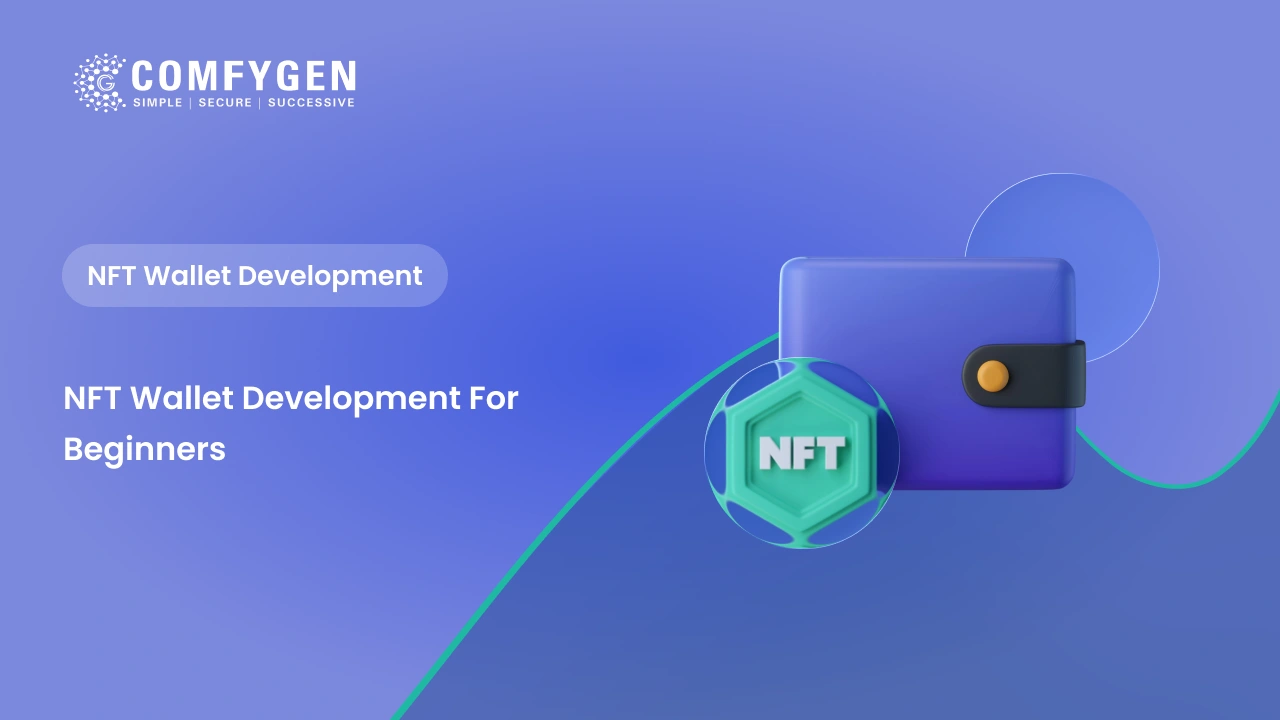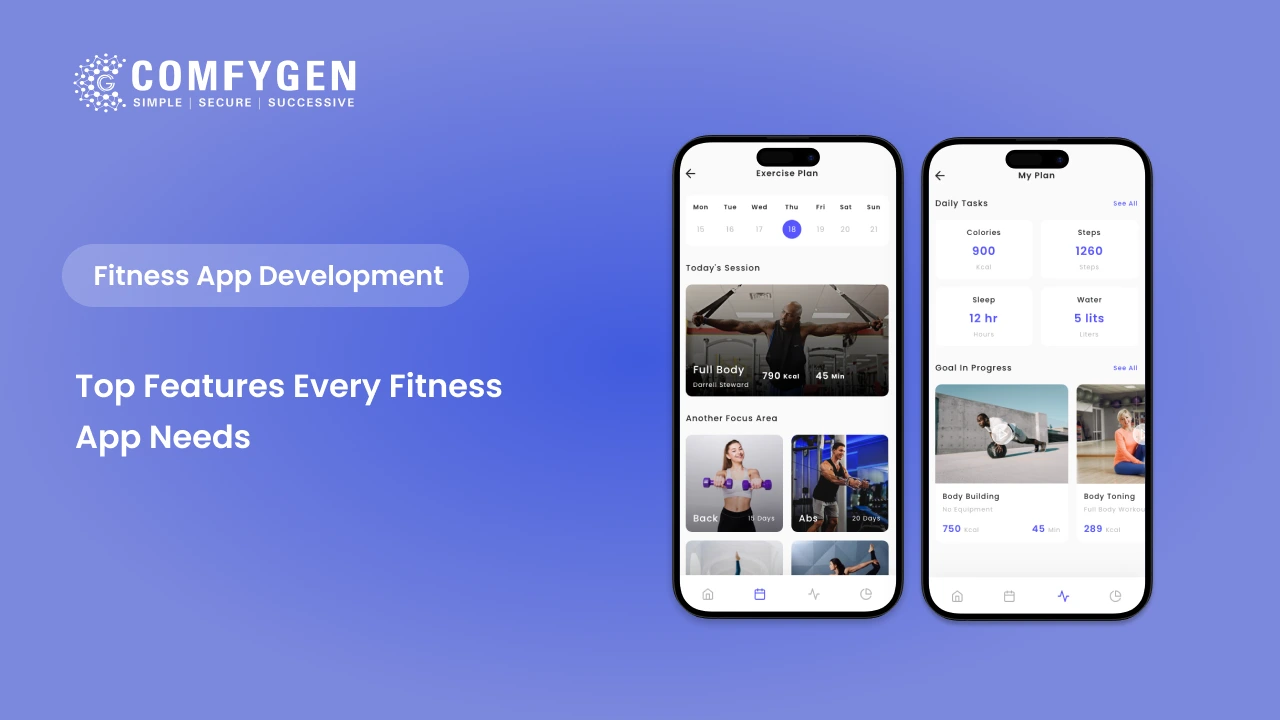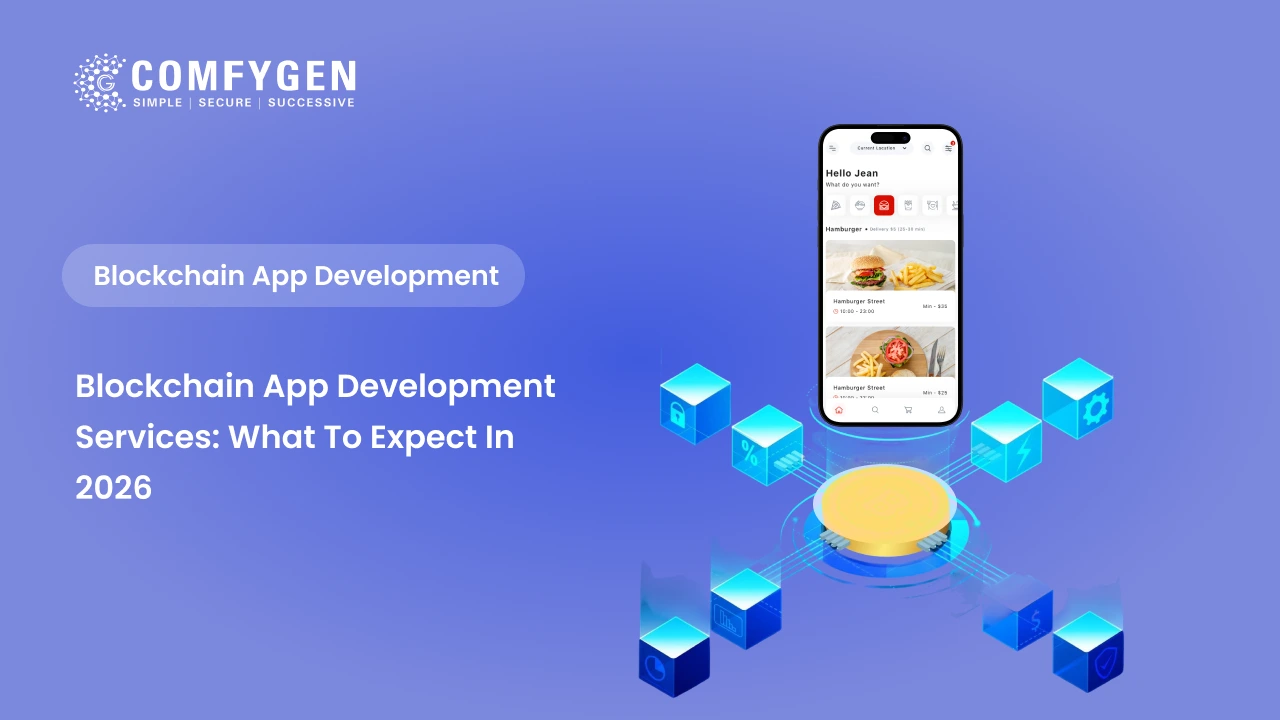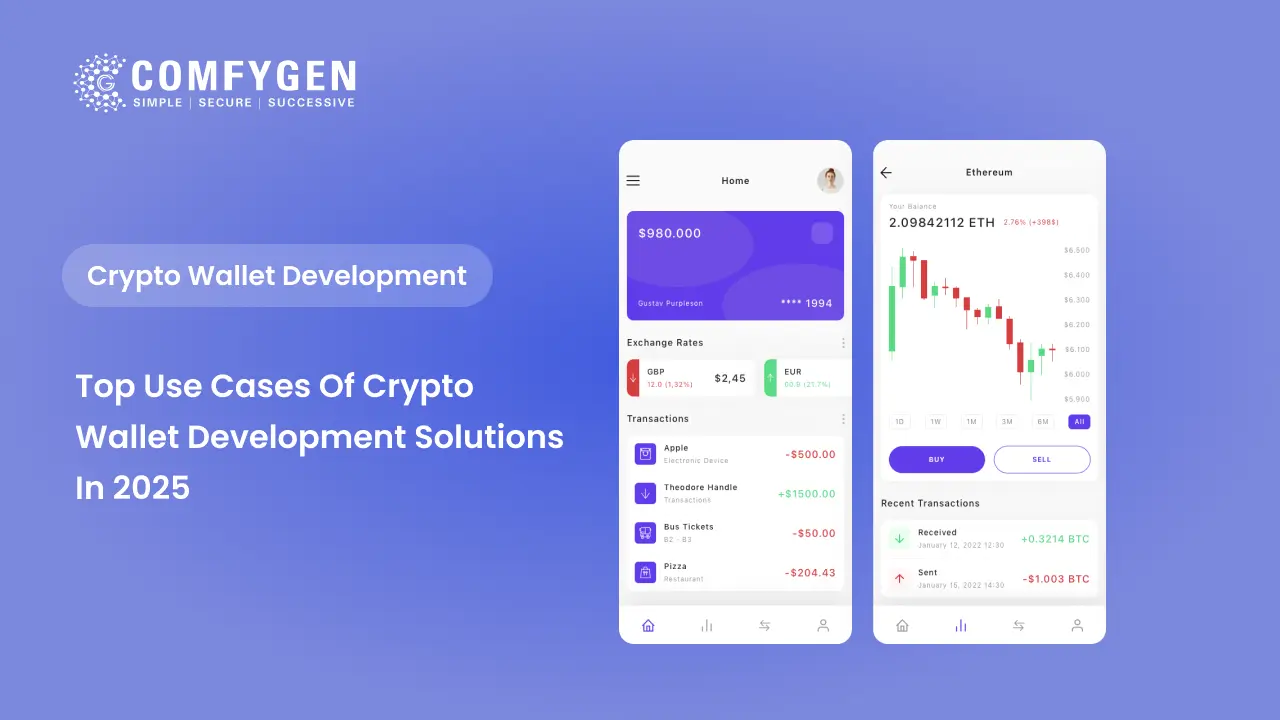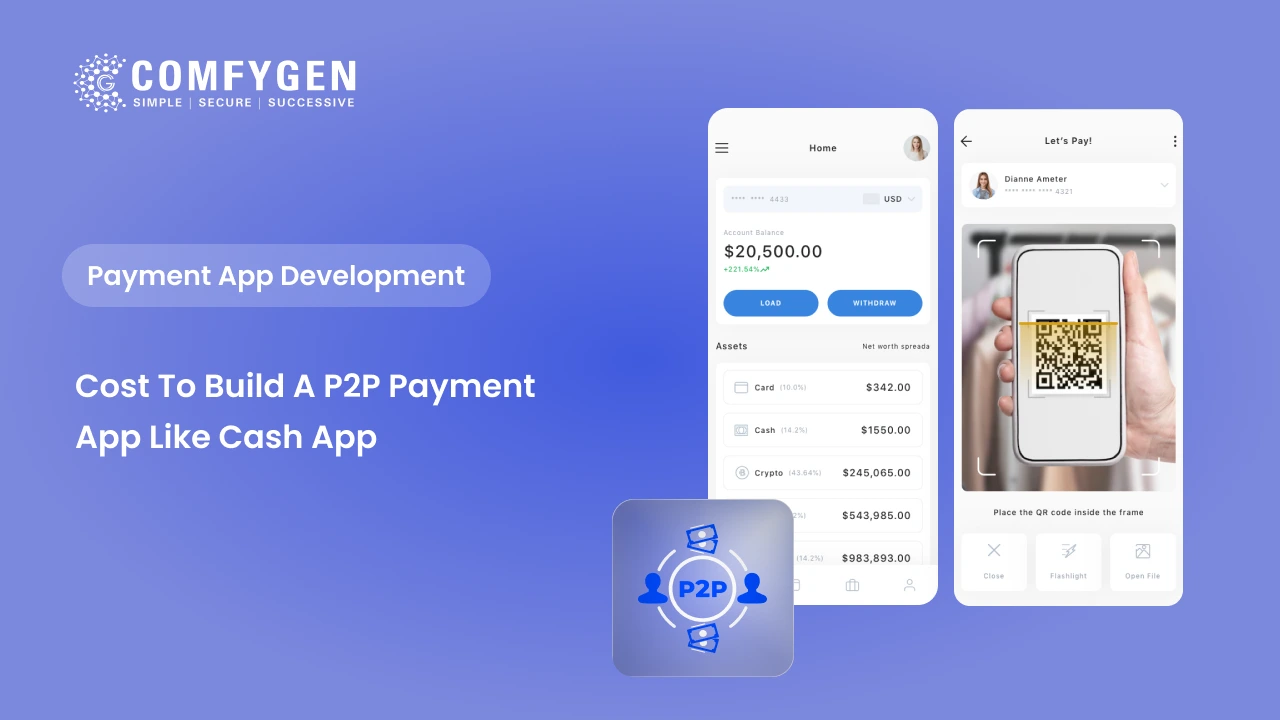NFT Wallet Development for Beginners
NFT or Non‑fungible tokens are unique digital assets that work on blockchain technology and represent verifiable ownership of items like artwork, in‑game items, music, domain names, or membership passes.
NFTs are growing into gaming, virtual real estate, brand loyalty programs, and enterprise use cases, the overall Non‑fungible token market is projected to reach hundreds of billions of dollars in value over the coming years, keeping demand high for underlying NFT wallet and NFT marketplace infrastructure. This surge in adoption is creating strong, ongoing demand for “NFT wallet development” as startups, creators, and established brands seek custom wallet development services according to their business models and user experiences.
In 2025, Web3 startups, consumer brands, and creative communities are increasingly investing in NFT trading platforms and NFT marketplaces, which in turn require secure, user-friendly crypto wallets that can onboard non-technical users. For blockchain developers and businesses NFT wallet development a strategic opportunity to develop better wallets means capturing more users, enabling new revenue streams, and staying competitive in a rapidly growing digital asset economy.
What is an NFT Wallet, and how does an NFT Wallet Work
An NFT wallet is a type of Web3 wallet development that stores the cryptographic keys required to own and manage non‑fungible tokens on blockchain networks such as Ethereum, Solana, and Polygon. They do not “hold” the NFT files themselves; they only manage your public and private keys, track your balances, and let you interact with NFT smart contracts and decentralized applications that recognize those keys as proof of ownership.
To understand how an NFT wallet works, start with keys. Your public key (or wallet address) is what you share so others can send you NFTs, while your private key (or seed phrase) is the secret that proves you are the owner and authorizes any transfer, listing, or interaction on-chain. In practice, when you connect your wallet to an NFT marketplace, the NFT marketplace asks the wallet to “sign” transactions with your private key; the blockchain then records the result as a verified change of ownership.
There are two main types of NFT wallets.
- Non‑custodial wallets give users full control over their private keys.
- Custodial wallets (often run by exchanges or platforms) hold keys on behalf of users, offering easier recovery and onboarding but concentrating trust and risk in the service provider.
Link Your Wallet to Start Trading
Digital Collectibles
Get a Free Quote
The Importance of NFT Wallet Development
For businesses, NFT wallets are more than just storage tools. NFTs are the core infrastructure that makes most NFT business models possible. An NFT wallet for businesses lets users mint, buy, sell, and hold digital accets across NFT marketplaces, gaming platforms, and metaverse environments, while keeping ownership records transparent and verifiable on-chain.
This is why NFT wallet development has become a key priority for NFT marketplaces and launchpads. Marketplaces depend on wallet connectivity to onboard users, manage bids and listings, enforce royalties, and support both primary drops and secondary trading. Gaming and metaverse platform projects use integrated wallets to hold in‑game assets, skins, land parcels, and tickets, enabling real player ownership and secondary markets that can significantly increase engagement and lifetime value.
Founders asking “Why build an NFT wallet?” The answer is that a custom NFT wallet allows Founders to shape onboarding, fees, user experience, and data insights in ways generic wallets cannot, while also opening up opportunities for NFT development services such as white‑label wallet development solutions, API integrations, and cross‑platform wallet SDKs. In a crowded NFT and Web3 market, owning the wallet layer can be the difference between being just another project and becoming the primary gateway your users depend on to manage all their digital assets.
Key Features of a Successful NFT Wallet
A successful NFT wallet must include core features that make sure of security, usability, and broad blockchain compatibility. Secure private key management is fundamental, with users needing reliable seed phrase backup and strong encryption to protect their digital assets using best wallet development company service. A visually intuitive NFT gallery with thumbnails, sorting, filters, and collection views enhances user experience by making it easy to browse and manage digital collectibles. Support for multiple NFT standards like ERC-20, ERC-721, ERC-1155, and SPL, along with multi-chain compatibility across Ethereum, Polygon, Solana, and BNB Chain, ensures flexibility and access to diverse NFT ecosystems. Seamless integration with popular marketplaces and dApps, facilitated through Wallet Connect or in-app browsers, enables users to transact and interact smoothly.
Advanced Features of NFT Wallet Development
- In-Wallet Swaps and Fiat On-Ramps
Simple crypto purchasing and swapping without leaving the wallet.
- Gas Fee Optimization Tools
Smart fee estimation to help users save time and cost.
- Real-Time Alerts
Push notifications for transfers, bids, offers, and marketplace activity.
- Social Login Options
Smooth onboarding through email, mobile, or social accounts.
- NFT Watchlists
Track favorite NFTs, upcoming drops, and trending collections.
- Portfolio Analytics
In-wallet insights on asset value, performance, and transaction history.
- Cross-Chain Bridging
Transfer NFTs between supported blockchains with minimal friction.
Choosing the Right Blockchain for Your NFT Wallet
Choosing the right Blockchain Network for your NFT wallet development is important to its NFT Wallet performance, NFT Wallet development cost, and user adoption. Here’s a comparison of popular chains and key decision criteria to consider:
- Ethereum is the pioneer of NFTs with a mature ecosystem, vast developer tools, and high liquidity. It supports complex smart contract development services for diverse NFT wallet use cases.
- Polygon offers an Ethereum-compatible layer-2 blockchain development solution with significantly lower fees and faster transaction speeds, making it attractive for mass-market NFT applications.
- Solana is known for its blazing-fast and very low-cost transactions, making it especially popular in gaming and NFT art communities. Wallets like Phantom provide a smooth experience on Solana.
- BNB Chain (Binance Smart Chain) is a cost-effective alternative with broad DeFi and NFT support and excellent integration with the Binance ecosystem. It benefits users who want quick, affordable transactions, but is less decentralized and mainly favored within Binance’s user base.
Step-by-Step Guide to Developing an NFT Wallet
Developing an NFT wallet involves a strategic approach. As a best Crypto wallet Development Company, we follow a step-by-step design and development approach for your target audience and use case. Here is a beginner-friendly roadmap to guide you:
Define Your Use Case and Audience
Start by identifying the wallet’s development purpose: Will it serve collectors, complement an NFT marketplace, support gaming assets, or act as a loyalty wallet for brands?
Choose Blockchain Network and NFT Standards
Select which blockchain networks (Ethereum, Solana, Polygon, etc.) and NFT standards (ERC-20, ERC-721, ERC-1155, SPL) your wallet will support. This choice impacts interoperability, user reach, and technical complexity.
Select Your Tech Stack
For backend development, frameworks like Node.js or TypeScript with REST or GraphQL APIs paired with Web3 libraries (Ethers.js, Web3.js, Solana Web3) enable blockchain interaction. For frontend, React or Next.js suits web apps, while React Native or Flutter serve mobile. Browser extension frameworks apply if building wallet extensions.
Design UX/UI
UX/UI Designer Craft intuitive user interfaces focused on NFT galleries, onboarding flows, transaction signing prompts, history views, and error feedback. A smooth,
Integrate Web3 Functionality
Implement core wallet features: generating/importing wallets, managing private keys securely, connecting to blockchain RPC nodes, signing and sending transactions, and displaying balances and NFT metadata. These functions are the foundation for wallet operations.
Connect to Marketplaces and dApps
Enable connectivity with NFT marketplaces and decentralized applications via protocols like Wallet Connect, deep links, or in-app browsers.
Implement Security Measures
Security is paramount: encrypt private keys, implement multi-factor authentication, anti-phishing layers, and secure backups. Protecting user assets and credentials is a non-negotiable aspect of wallet reliability.
Test, Audit, and Optimize
Conduct comprehensive testing, including smart contract integrations, load testing, security audits, and usability testing with beta users. Iteratively refine the wallet to fix issues and enhance performance.
Launch and Maintain
Publish your NFT wallet on app stores or web platforms. Maintain active documentation, provide regular updates, issue security patches promptly, and support your user community to ensure long-term success.
Want to build your own NFT wallet?
Get a Free Quote
Security Considerations in NFT Wallet Development
Security is a foundational pillar of NFT wallet development, crucial for protecting users’ assets and privacy. Here are key security considerations:
Private key and seed phrase protection
- Strong encryption for keys and seed phrases
- Secure local storage for sensitive data
- Non-custodial design for complete user control
- Reliable seed phrase backup options
- Hardware wallet support for offline protection
Authentication and access control
- Password, PIN, fingerprint, and facial recognition support
- Two-factor or multi-factor authentication for stronger security
- Device binding to limit wallet access to approved devices
- Physical 2FA tokens like Yubikeys for hardware-level protection
Anti-phishing and fraud protection
- Transaction previews to verify recipients and amounts
- Warnings for suspicious or fake domains
- Detection of malicious dApps and unsafe interactions
- Real-time monitoring to flag unusual or risky activity
Regular security audits
- Routine security audits to catch hidden weaknesses
- Thorough code reviews for early vulnerability detection
- Bug bounty programs to uncover issues from real-world testers
- Adoption of updated encryption standards
- Following Web3 security guidelines and secure coding practices
Popular NFT Wallets: A Comparative Overview
Here is a comparative overview of popular NFT wallets in 2025, highlighting their strengths and what developers can learn from them:
| Wallet | Platform | Key Strengths | Notable Features |
| MetaMask | Browser & Mobile | Dominates Ethereum and EVM-compatible NFTs | Strong dApp compatibility, seamless Web3 integration, popular among NFT users and developers for ease of use and robust ecosystem support. |
| Phantom | Desktop & Mobile | Leading Solana wallet, growing EVM support | Fast transactions, highly UX-focused UI, cross-chain support via WalletConnect. |
| Coinbase Wallet | Mobile | Beginner-friendly, fiat on-ramp support | Integrated with Coinbase ecosystem, easy crypto purchase, built-in dApp browser, supports Ethereum and Polygon. |
| Trust Wallet | Mobile | Multi-chain support (Ethereum, BNB Chain, etc.) | Biometric security, in-app DApp browser, supports numerous blockchains and NFT marketplaces. |
| Ledger & Trezor | Hardware wallets | Maximum security, cold storage | Offline key storage, integration with hot wallets like MetaMask, excellent for serious collectors prioritizing security. |
Future Trends in NFT Wallet Development
Future trends in NFT wallet development for 2025 point to a dynamic evolution focused on interoperability, smarter security, user-friendly account management, and deeper ecosystem integration.
- Multi-chain and cross-chain support is becoming standard. Users expect one wallet to manage NFTs across Ethereum, layer-2 networks, Solana, and more. It creates a unified way to view and move assets without switching platforms.
- Security features are getting smarter. Transaction simulation, collection locking, risk scoring, and better scam alerts help users avoid mistakes and stay protected.
- Embedded wallets and account abstraction are simplifying onboarding. Email or social login, gasless transactions, and easy recovery make Web3 far less intimidating for beginners.
- NFT wallets are also connecting deeper with gaming, metaverse projects, and brand ecosystems. Token-gated access, loyalty passes, and digital twins turn wallets into tools for entertainment, commerce, and real-world experiences.
Conclusion
NFT wallet development is central to onboarding the next digital boom of users into Web3, gaming, and digital commerce, making it a cornerstone of the evolving digital asset economy. As NFTs grow beyond collectibles into gaming assets, token-gated access, and brand loyalty programs, wallets act as the primary interface for ownership, interaction, and value exchange. Comfygen Technologies recognizes that building intuitive, secure, and scalable NFT wallets is essential for businesses and creators to capitalize on these opportunities and engage their communities effectively.

Mr. Saddam Husen, (CTO)
Mr. Saddam Husen, CTO at Comfygen, is a renowned Blockchain expert and IT consultant with extensive experience in blockchain development, crypto wallets, DeFi, ICOs, and smart contracts. Passionate about digital transformation, he helps businesses harness blockchain technology’s potential, driving innovation and enhancing IT infrastructure for global success.

